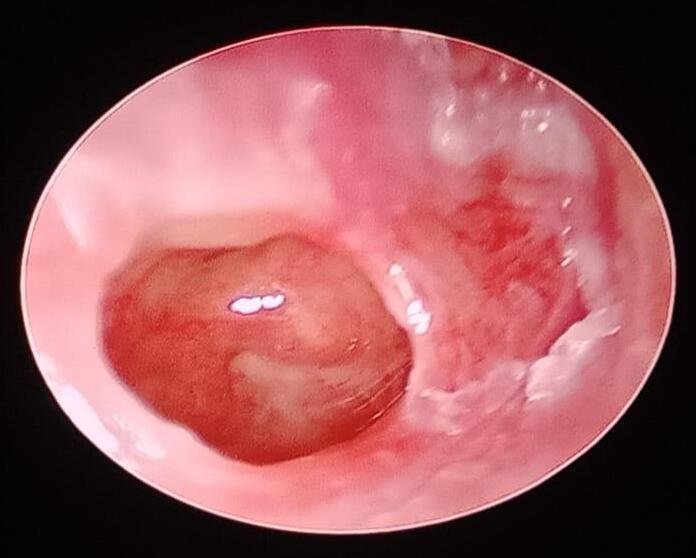How Is Eardrum Perforation Diagnosed?
Person may have one or many of these ear symptom Ear pain, discharge, bleeding, or hearing loss These symptoms may be the result of eardrum perforation and if left untreated can cause serious damage to the inner ear. Many times when the eardrum is perforated, the small bones behind the eardrum, or ossicles, break as well. When this happens, hearing loss may become severe.
Dr. Darakshan is able to diagnose an eardrum perforation by an examination of the ear using an otoscope. A hearing test Audiometry can be performed to evaluate whether or not any hearing loss has occurred.
Minor perforations of the tympanic membrane often do not need any treatment, as the hole will close by proper treatment without surgery
If a perforation persists for more than a few weeks, and does not respond to treatment, a surgery [ Tympanoplasty ] may be necessary.

What is a Tympanoplasty?
Ear drum perforation and associated ear bone damage is corrected by this very procedure. New ear drum and bones are made with patients own fascia and cartilage.
- Endaural incision
- postaural incision


Why is a Tympanoplasty Performed?
Its primary role is to repair or replace an ear drum that has been damaged from chronic infections or congenital defects. However, it may also be performed to repair damages from injuries like punctures.
Many doctors recommend it when other treatment options have failed to prevent recurrent ear infections in patients. When people do not respond to antibiotics or antihistamines, they may need to undergo a tympanoplasty to alleviate the pain and pressure of an infected and ruptured ear drum.
Tympanoplasty Recovery
It is a microscopic surgery so the recovery period for a tympanoplasty is shorter than recovery times for more invasive procedures. Many patients are fully recuperated in a week to 10 days after their operations.
You likewise should regain your normal hearing and sense of balance within three months after the surgery.
Frequently Asked Questions (FAQ’s)
Can repeated minor eardrum tears silently lead to permanent hearing damage?
Even small perforations, if recurrent, can cause scarring, chronic infections, and subtle conductive hearing loss over time. Children may develop speech delays, while adults may notice difficulty in noisy environments. Recognizing and treating these early protects lifelong hearing.
Why do some eardrum perforations worsen after seemingly harmless activities?
Activities like swimming, diving, or forceful nose-blowing can introduce water or pressure into the ear canal, enlarging the perforation or triggering infections. Awareness of these risks allows patients to protect the ear while it heals, avoiding preventable complications.
How does age affect eardrum perforation recovery and outcomes?
Children often heal faster but are vulnerable to developmental issues if untreated. Seniors may experience slower tissue regeneration and higher infection risk. Tailored monitoring ensures safe recovery and preserves hearing across all age groups.
Can seasonal allergies or humidity increase the risk of eardrum perforations?
Yes. Allergies and humid climates create fluid buildup and irritation, making the eardrum more susceptible to tears and fungal or bacterial infections. Managing these triggers supports faster recovery and lowers recurrence risk.
What advanced treatment options restore hearing when natural healing fails?
Tympanoplasty, laser-assisted repair, and precise grafting techniques close perforations effectively, restoring sound conduction and preventing repeat injury. Expert evaluation ensures the right method for perforation size, location, and patient profile.
How can lifestyle habits unknowingly delay healing?
Headphone use, swimming without ear protection, and inserting objects in the ear canal increase infection risk and prolong recovery. Adjusting these habits during healing improves outcomes and reduces the chance of repeated perforations.
When can a perforated eardrum cause serious complications beyond hearing loss?
Untreated perforations can allow infections to spread to the middle ear or mastoid bone, causing dizziness, severe pain, or rarely cholesteatoma, a destructive growth. Early intervention prevents these potentially dangerous outcomes.
What steps ensure long-term ear health after a perforation?
Consistent follow-up, careful ear hygiene, avoiding trauma, and prompt treatment of any subsequent infections maintain eardrum integrity. Even after full healing, periodic hearing checks detect subtle changes before they become permanent.
